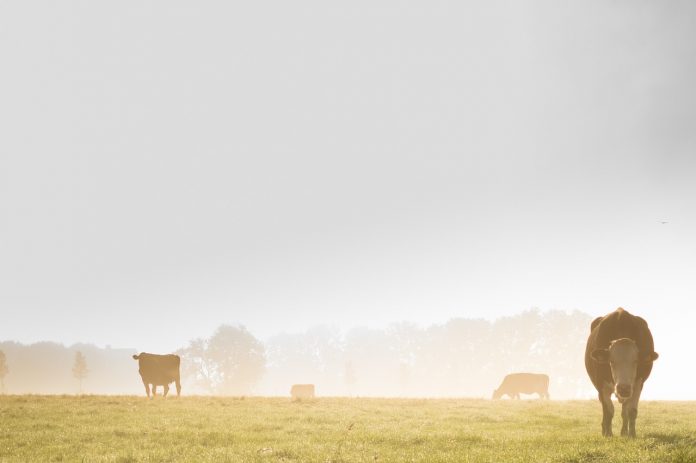On New Year’s Eve day, the fog was so thick we could barely see the red barn behind the house. New Year’s Day dawned bright and warm, but by the next day, the fog was back — and the next day, and the next. For most of last week, the whole world was white on white on white — the fog turning to frost on the branches and buildings, covering the grasses and fence posts, shrouding the sky in a dense shimmering swirl of moisture. Yesterday, the fog lifted briefly so the gray clouds could bestow us with some rain and sleet, and then the evening sky settled into fog once again.
We get a lot of sun here in western Dakota, so I don’t mind the foggy days except for one thing: The Fog Calendar. If you are unfamiliar with this system of weather prediction, it is folk wisdom around these parts that dense fog predicts future precipitation. Most people don’t take it too seriously until we have a week like this one, and then the fog calendar is suddenly on everyone’s mind.
I do take it seriously, and that is because my friend Heather Benson of Dalarna Farms has done some research on the subject. (Relatedly, you should check her out on social media if you like funny farm stories. She is a great storyteller.)
Here’s some information she shared recently about the fog calendar:
1. The fog calendar ‘old timers tale’ goes as such: Count three moons after a foggy morning and you will get precipitation on that date. Three lunar cycles is about 84 days…
2. Mind you — this “precipitation event” might be snow, rain or MORE FOG (in which case, reset your fog calendar again!)
3. The fog calendar is a product of the Great Plains. The geography of these plains means we have fairly standard ways winter weather travels through our region. I don’t know if it would work in other regions.
She goes on to write, “My closest official NOAA weather station is Watertown, SD. I was able to pull data for Dense Fog Advisories and precipitation going back to 2006. During that period there were 134 Dense Fog Advisories issued. Only 14 fog dates did not end up with measurable precip within 72 hours but ALL fog dates (100%) had measurable precip within 96 hours.
That is much higher than the statistical chance (40.5%)… especially considering most of the months where the Fog Calendar applies are the driest months for South Dakota. And during those 16 years, 100% of those times we had multiple days of dense fog in a row it was followed by large precipitation events 84 days later… Every. Single. Time.”
Interestingly, the fog at New Year’s (as well as the rain and sleet the day after Christmas) was predicted by the fog calendar. A little more than 84 days ago Heather and I were exchanging alarmed text messages about the dense fog we were experiencing then, and noting that it didn’t bode well for the holiday season. As we saw over the last few weeks, those dense, week-long fog events in the fall were mostly harbingers of more fog, not the heavy winter storms we had last year at this time (which, incidentally, were also predicted by the fog calendar.)
Guess what happens 84 days from now? Our first mama cows will be going into labor, and the first newborns will arrive. A blizzard would be devastating; hard, cold rain maybe even worse. Is it worth hoping this fog is once again just predicting more fog?
There’s another piece of folk wisdom that goes: “You have to give a little blood to get a little moisture.” Epic spring storms are often the only thing that gets the grass growing and keeps us from drought, a perennial concern on the western prairie. We lose calves in bad weather, but they won’t thrive if the grass doesn’t green, so perhaps it is a blessing we don’t get to choose. And at least we have 84 days to prepare!













